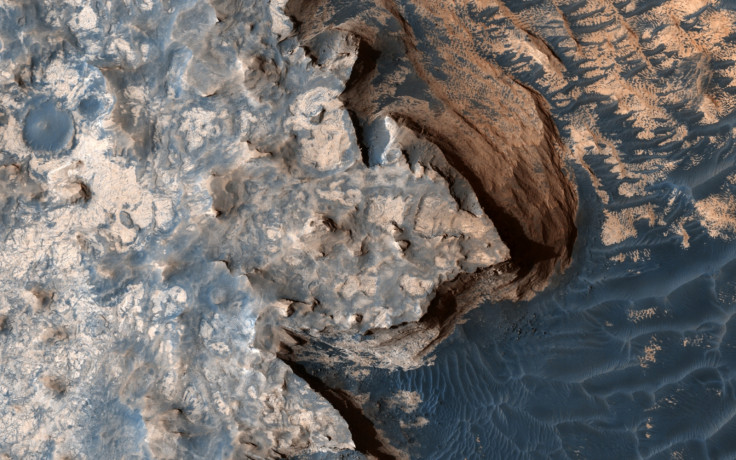Nasa shares stunning images of ice dunes creating patterns on Mars
Ice dunes and snowfall on Mars are made of dry ice and not water.

Nasa's Mars Reconnaissance Orbiter has revealed images of spring in the Red Planet's northern hemisphere. The image was shot by the High Resolution Imaging Science Experiment (HiRISE) camera and shows dunes of ice on the martian surface.
Unlike ice on Earth, which is basically a frozen form of liquid water – a combination of hydrogen and oxygen, ice on Mars is made of carbon dioxide, reported Nasa. So there are large dunes essentially made of dry ice on the Red Planet's surface.
Dry ice covers the dunes during Mars' winter season. In spring, however, when the sun is out, heat starts to crack open the surface of these icy dunes.
This, in turn, leads to gases escaping from within the dune ice. These gases carry dark sand from below and create plumes that are seen as beautiful patterns from space.
Between large dunes, there are rough surfaces on which frost is trapped behind small, sheltered ridges, according to Nasa.
The image was captured by Nasa in May this year, marking spring time in Mars, with the Red Planet's dune fields located in its northern hemisphere.
Earlier this year, Nasa released more pictures of dunes that resembled the White Cliffs of Dover in England. A Nasa report said that the basaltic dunes resemble an ocean coast with cliffs and waves crashing against it, showing the turbulent nature of Mars' dune fields.
While the colour of the images and the way it looks might seem like there is an abundance of water on the planet, Nasa is quick to point out that the Martian surface is "much dryer than our imaginations might want to suggest".

It was only recently revealed that there are cold blizzards on Mars at night with heavy snowfall, which is accelerated by fast winds that cause the icy snow to fall at a rate of nearly one mile every ten minutes.
Martian landscapes, however barren and stark they may be, undoubtedly make for fascinating viewing, especially when Nasa dumps HiRISE images.
© Copyright IBTimes 2025. All rights reserved.





















